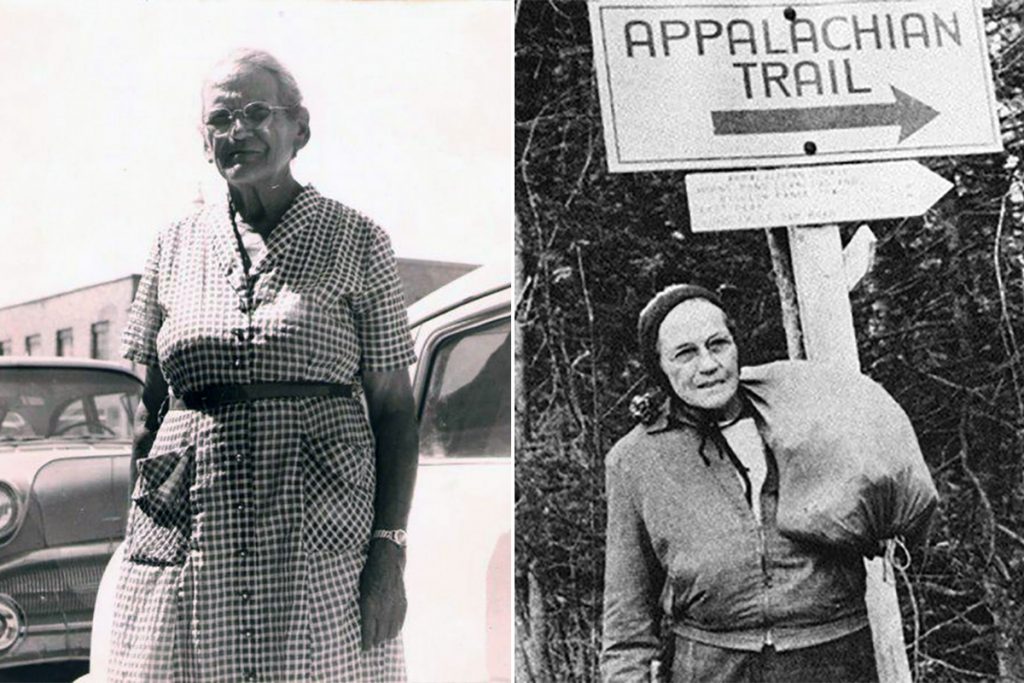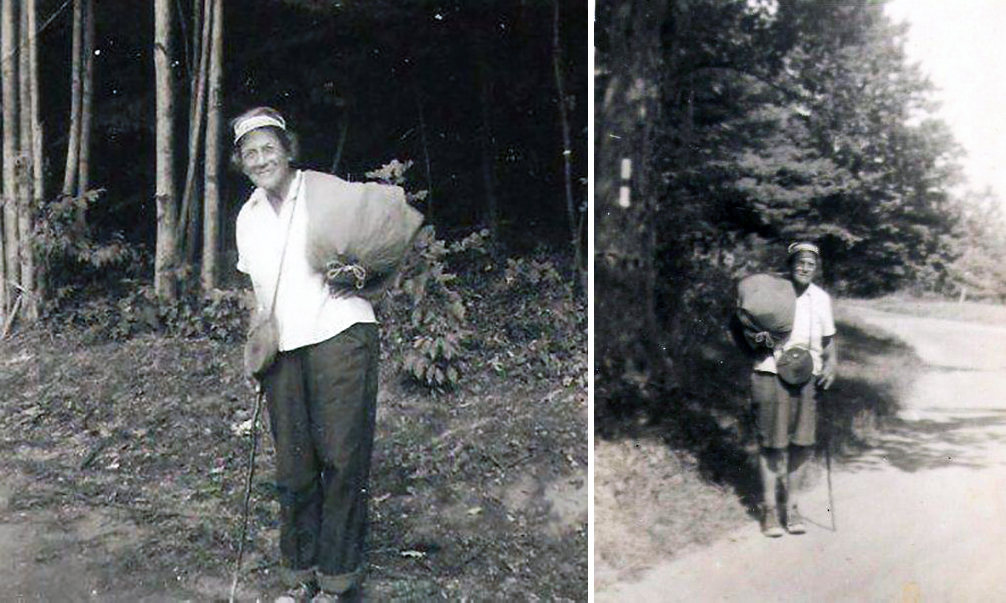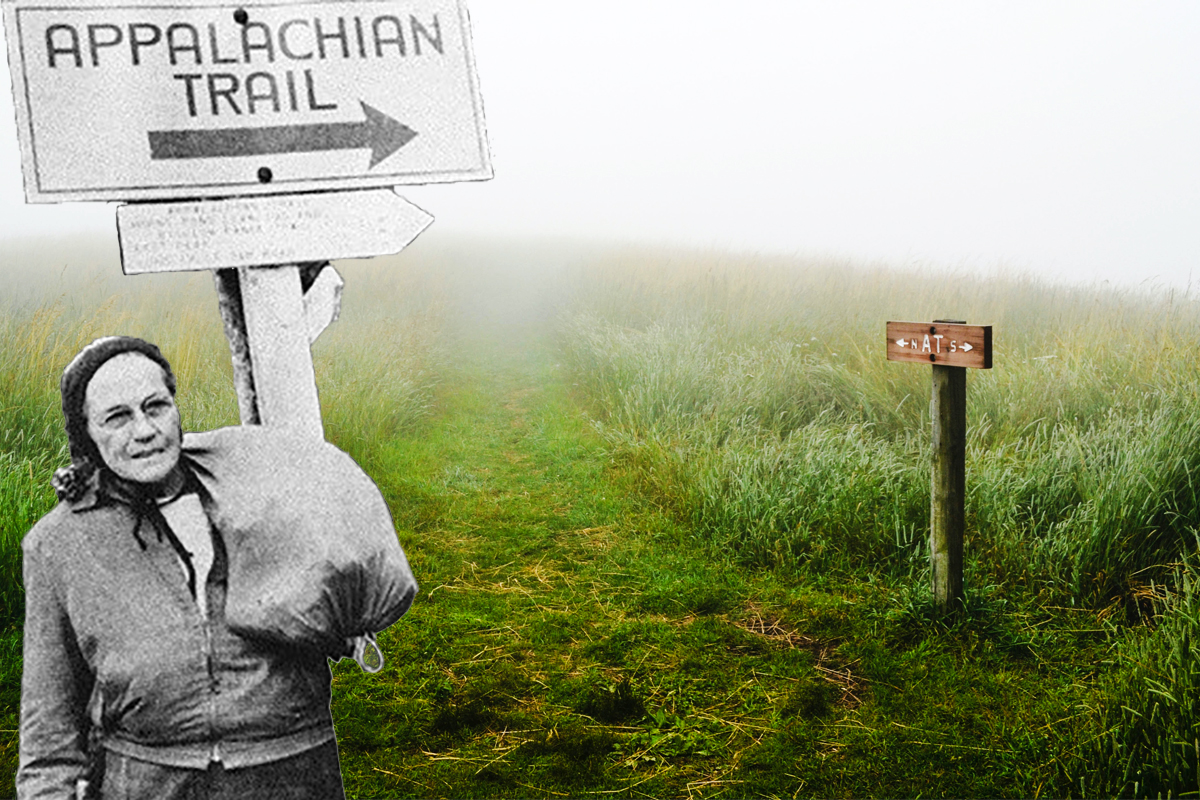Thousands of hikers have sojourned to Hocking Hills State Park in Ohio every January since 1967 to honor the hiking legacy of Emma “Grandma” Gatewood. She was a poet, mother to 11 children, and a survivor of domestic abuse. She was also the first woman to hike the 2,168-mile (in those days) Appalachian Trail (AT) alone. And she did it in 1955 at the age of 67 — for the first time.
Gatewood was also the first person to hike the entire AT three times, and she became an accidental pioneer of the ultralight hiking movement while doing it.
Here’s how one of the most unlikely people challenged herself to the extreme using the most meager kit and became a hiking icon.
The Farm, 11 Children, and Horrible Abuse
Emma Gatewood’s early life was nothing particularly extraordinary. She was born in Guyan Township, Ohio, on Oct. 25, 1887, in the small log cabin where her family lived. Her mother mostly raised Emma and her 14 siblings; her father spent most of his time drinking and gambling after having his leg amputated in the Civil War. The children slept four to a bed.
“I did it. I said I’d do it, and I’ve done it.”
—Emma Gatewood
She later married P. C. Gatewood, with whom she had 11 children of her own. She worked the family farm from sunrise to sunset just about every day. P.C. was a teacher and tobacco farmer; he was also physically abusive to the extreme. He often beat Emma senseless, and he nearly killed her several times: a fact later confirmed by her children, journals, and letters. When she could escape the beatings, she would retreat to the nearby woods to find some safety and peace.
P.C.’s violence extended beyond the Gatewood household. In 1924, he killed a man during an argument and was convicted of manslaughter, but it provided no respite for Emma, as he received a reduced sentence so he could take care of his farm and family.
She endured the abusive marriage for nearly 30 years. Domestic violence wasn’t considered a crime nationwide until 1920, and even so, the authorities didn’t do much about it until the early 1970s. To put Emma’s situation in context: One night, P.C. beat her so severely that he broke her teeth and cracked her ribs. She threw a sack of flour at him in defense. He then had her arrested for throwing the flour.

Ironically, the arrest led Emma to a way out of her marriage. While she was in jail, the town’s mayor took note of Emma’s condition and situation, and he decided to help. She applied for a divorce in 1941 and had to testify against P.C. in court. The court granted the divorce, and the next part of her life began.
Finding and Conquering The Trail
About 10 years later, a small magazine article would change Emma’s life. Sometime in the early 1950s, she read a piece in National Geographic magazine about hiking the Appalachian Trail. The story made the experience sound fun and even easy. It also mentioned that no woman had ever walked the trail on her own. At the time, only one woman had ever completed the trail, but she did so with a companion in 1952.
In July 1954, at age 66, Emma Gatewood set out to hike south from the northern terminus of the Appalachian Trail: Mount Katahdin in Maine. She got lost within a few days, ran out of food, and was rescued by forest rangers. But Emma wasn’t the kind of woman who gave up quickly.

The following year she made history. Emma tackled the AT again, but this time, she started at the southern terminus, which was Mount Oglethorpe in Georgia at the time. (The southern terminus was moved to nearby Springer Mountain when the Mount Oglethorpe area was developed, where it remains today.) Emma told her children she was going for a walk but provided no clue about what she had planned.
As she made her way north on the trail, the public heard about her trek, and local newspapers started reporting on her story as she passed through their coverage zones.
On Sept. 25, 146 days after she began her journey, Grandma Gatewood, as she was now known, stood atop Mount Katahdin. She signed the register, sang the first verse of America the Beautiful, and said, “I did it. I said I’d do it, and I’ve done it.”
An Accidental Ultralight Legacy
What’s even more impressive than her solo trek on the AT, and why she is considered a pioneer of the ultralight hiking movement, is how little she carried on her historic hike. Emma had no tent or sleeping bag for 146 days. She wore a pair of Keds (and later appeared in an ad campaign for the company) and carried a small notebook along with a homemade bag containing some clothes and food. The rest of her gear included an astronaut blanket, a shower curtain, and an emergency kit. That’s it.
She often slept in piles of leaves, used stones heated by a fire to keep warm. And she often relied on strangers she met on the trail for food or a place to sleep.
Today, the name of the game for ultralight hikers and campers is striving to carry the fewest gear items that weigh as little as possible at the expense of comfort and convenience. Emma’s stripped-down gear list was mostly an accident. She later said the National Geographic article she’d read made it sound like a person didn’t need much gear at all to hike the trail and that the journey was akin to a very long walk. In a later interview she said, “This is no trail. This is a nightmare. For some fool reason, they always lead you right up over the biggest rock to the top of the biggest mountain they can find.”
Her national celebrity grew soon after Emma completed her first journey along the AT. Eventually, her story even made it into the pages of National Geographic, the magazine that had inspired her journey, as well as Sports Illustrated and a bevy of national newspapers. She also made a number of television appearances around the country. But Grandma Gatewood wasn’t done with the AT.
She went on to hike the trail again in 1957, then again in sections a few years later, both times helping to grow general interest in long-distance hiking among the American public.
Inspired by the Oregon centennial, she hiked 2,000 miles of the Oregon Trail in 1959 the way she liked to do it: on her own. She won numerous awards and was inducted into the Appalachian Trail Museum’s Hall of Fame in 2012. Today, the first exhibit visitors see when they enter the museum is of Grandma Gatewood.
By the time Emma died in 1973 at age 86, she had walked nearly 14,000 miles, or about halfway around the Earth.
Emma Gatewood’s story is one of perseverance, endurance, and it proves you’re never too old to become a legend and an all-American badass.
Read Next: 4 of the Best Hikes in the Northeast








Comments